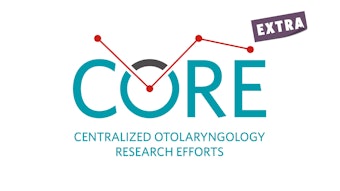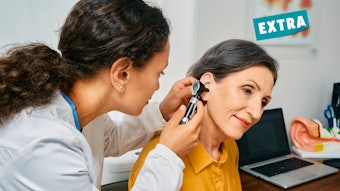Comprehensive Care for Tinnitus and Headache
Growing evidence suggests that migraine can trigger, worsen, or even cause tinnitus in some patients.
Josette Graves, MS, Jena Patel, MD, and Michael Teixido, MD

Tinnitus often develops after hair cells in the cochlea are damaged causing hearing loss. Subsequent maladaptive changes to the auditory system may then occur as the brain attempts to “fill in” the missing input. These changes include:
Cortical reorganization, which causes over-representation of certain frequencies
Neural synchrony, where too many neurons representing the same frequency fire together
Failure of inhibitory networks, which prevents the brain from filtering out meaningless signals.1
Once abnormal auditory signals are generated, they are further processed by higher-order neural networks including the limbic and attention-control systems, which modify how they are experienced. If these networks tag the auditory signals as important or distressing, tinnitus tends to feel louder, more bothersome, and harder to ignore, which contributes to its chronicity.2 Risk factors that increase susceptibility to developing tinnitus include inner hair cell damage, extended high-frequency hearing loss (above 8 kHz), hyperacusis, and psychological stress, depression, anxiety, or migraine.
Migraine is a common disorder characterized by headaches and sensory hypersensitivities. Migraine involves activation of the trigeminal nerve and release of inflammatory neuropeptides, producing sensitivity and pain. Vascular changes commonly associated with migraine headaches are a secondary phenomenon. Waves of altered brain activity, called cortical spreading depression, can cause auras that can be very diverse in character, though visual auras are most known. Somatosensory input from the head, face, and jaw carried by the trigeminal nerve projects to the dorsal cochlear nucleus, linking pain and sensory pathways to auditory pathways and helps explain the overlap between migraine and tinnitus.3
Additional changes—such as disrupted thalamocortical signaling, increased cortical excitability, and hyperactivity in the auditory and vestibular nuclei, hypothalamus, and salivatory nucleus—make the brain more sensitive to sensory input. These combined mechanisms help explain why migraine symptoms vary widely, even within the same family, and why auditory disturbances like tinnitus can occur even without headache.
Evidence increasingly supports a link between tinnitus and migraine. Otolaryngology clinics have reported higher-than-expected rates of chronic migraine among patients with tinnitus.4 A 2015 study found that almost half of tinnitus patients with migraine noted worsening of tinnitus during headache episodes, often on the same side, and some experienced improvement with migraine-directed treatment.5 Similarly, the U.S. NHANES survey found that individuals with migraine had significantly higher odds of both tinnitus and hearing loss.6 Even certain subtypes, such as pulsatile tinnitus, may respond to migraine therapy.7 These findings highlight the potential benefit of considering migraine-directed approaches in tinnitus patients.
It is not just a rare or occasional patient with tinnitus who may benefit from migraine treatment, as migraine itself is highly prevalent. Thirteen percent of the population has clear-cut migraine headache, but many more individuals have migraine activity that does not meet strict criteria used in epidemiologic studies.8 Identifying patients with tinnitus who may benefit from migraine treatment requires careful evaluation. Suspicion may be higher in patients with normal hearing on standard audiograms who also exhibit features of migraine, though distinguishing qualities are most seen in patients with hearing loss.
Thorough history-taking is essential, focusing on the character of the tinnitus (unilateral vs. bilateral, tonal vs. hissing, constant vs. intermittent, unchanging vs. variable), potential triggers or modifiers (weather, stress, food, hormones, headache), comorbidities (anxiety, depression, insomnia), migraine-associated symptoms (light or sound sensitivity, motion sickness, sinus or ear pressure, hormonal headaches), and history of noise exposure (concerts, earbuds, occupational risks).
Many patients who benefit from treatment report their tinnitus changes in loudness or character frequently, as opposed to a typical constant and never-changing tinnitus which only presents as louder in quiet environments. Audiologic assessment should include extended high frequency testing up to 20 kHz to detect early cochlear damage that might not appear on standard testing.
Typical counseling for patients with tinnitus includes sound masking techniques, prevention of further noise-induced damage, cognitive behavioral therapy (CBT), and magnesium glycinate 400 mg daily to protect against further noise injury.9 Hearing aids can improve hearing and sometimes mask tinnitus, while cochlear implants suppress symptoms in about 85% of profoundly hearing-impaired patients. Because trigeminal pathways modulate and interconnect with auditory pathways, trigeminal hyperactivity such as migraine can play a key role in tinnitus.
Treating migraine can significantly improve symptoms for many patients—often beyond what is achieved with standard tinnitus therapies alone. Common migraine medications that can be added to the treatment toolbox include serotonin and norepinephrine re-uptake inhibitors (SNRIs) (e.g., nortriptyline, amitriptyline), calcium channel blockers (e.g., diltiazem, verapamil), sodium channel blockers (e.g., topiramate), beta blockers (e.g., propranolol, metoprolol), and newer agents targeting the inflammatory peptide calcitonin gene-related peptide (CGRP) (e.g., atogepant, rimegepant). Given the traditional difficulty in offering satisfactory treatment to patients with tinnitus makes testimonials10 from patients successfully treated in this manner very compelling. While adopting migraine management is a hurdle for many otolaryngologists, guidance can be sought in an increasing number of AAO-HNS courses, and online at the Association of Migraine Disorders and from the senior author.11 Emerging strategies under investigation include bimodal stimulation (combined sound and tongue or neck electrical stimulation), which also relies on the interconnection of trigeminal and auditory pathways. Stimulation of trigeminal nerve inputs to the auditory system may help to reverse maladaptive reorganization after hearing loss that so commonly leads to tinnitus.
In conclusion, tinnitus is a multifaceted condition that extends beyond simple cochlear damage and is, in many cases, closely tied to migraine through shared neural mechanisms. Recognizing migraine features in tinnitus patients is essential, as standard migraine therapies can meaningfully reduce symptoms for many individuals. Because migraine is such a prevalent problem and often presents in variable patterns, even patients who do not self-identify as migraine sufferers may benefit from a migraine-focused evaluation and treatment plan. Ultimately, when migraine features are present in tinnitus patients, addressing the migraine can offer relief for both conditions.
References
- Roberts LE, Husain FT, Eggermont JJ. Role of attention in the generation and modulation of tinnitus. Neurosci Biobehav Rev. 2013 Sep;37(8):1754-73. doi: 10.1016/j.neubiorev.2013.07.007. Epub 2013 Jul 19. PMID: 23876286.
- Leaver AM, Renier L, Chevillet MA, Morgan S, Kim HJ, Rauschecker JP. Dysregulation of limbic and auditory networks in tinnitus. Neuron. 2011 Jan 13;69(1):33-43. doi: 10.1016/j.neuron.2010.12.002. PMID: 21220097; PMCID: PMC3092532.
- Levine RA, Oron Y. Tinnitus. Handb Clin Neurol. 2015;129:409-431. doi:10.1016/B978-0-444-62630-1.00023-X.
- Schulz KA, Esmati E, Godley FA, Hill CL, Monfared A, Teixido M, Tucci DL, Witsell DL. Patterns of Migraine Disease in Otolaryngology: A CHEER Network Study. Otolaryngol Head Neck Surg. 2018 Jul;159(1):42-50. doi: 10.1177/0194599818764387. Epub 2018 Mar 20. PMID: 29558248.
- Langguth B, Hund V, Busch V, Jürgens TP, Lainez JM, Landgrebe M, Schecklmann M. Tinnitus and Headache. Biomed Res Int. 2015;2015:797416. doi: 10.1155/2015/797416. Epub 2015 Oct 25. PMID: 26583133; PMCID: PMC4637068.
- Goshtasbi K, Abouzari M, Risbud A, Mostaghni N, Muhonen EG, Martin E, Djalilian HR. Tinnitus and Subjective Hearing Loss are More Common in Migraine: A Cross-Sectional NHANES Analysis. Otol Neurotol. 2021 Oct 1;42(9):1329-1333. doi: 10.1097/MAO.0000000000003247. PMID: 34238896; PMCID: PMC8590584.
- Weinreich HM, Carey JP. Prevalence of Pulsatile Tinnitus Among Patients With Migraine. Otol Neurotol. 2016 Mar;37(3):244-7. doi: 10.1097/MAO.0000000000000968. PMID: 26859546.
- Lipton RB, Stewart WF, Diamond S, et al. Prevalence and burden of migraine in the United States: Data from the American Migraine Study II. Headache. 2001;41(7):646-657.
- Attias J, Sapir S, Bresloff I, Reshef-Haran I, Ising H. Reduction in noise-induced temporary threshold shift in humans following oral magnesium intake. Clin Otolaryngol Allied Sci. 2004 Dec;29(6):635-41. doi: 10.1111/j.1365-2273.2004.00866.x. PMID: 15533151.
- https://www.youtube.com/playlist?list=PLxlTIq8KnxNKttTfKt_fPBSyVoLk9cAhW
- https://entad.org/resources/patient-information-dr-teixido/migraine-management-for-otolaryngologists/
















